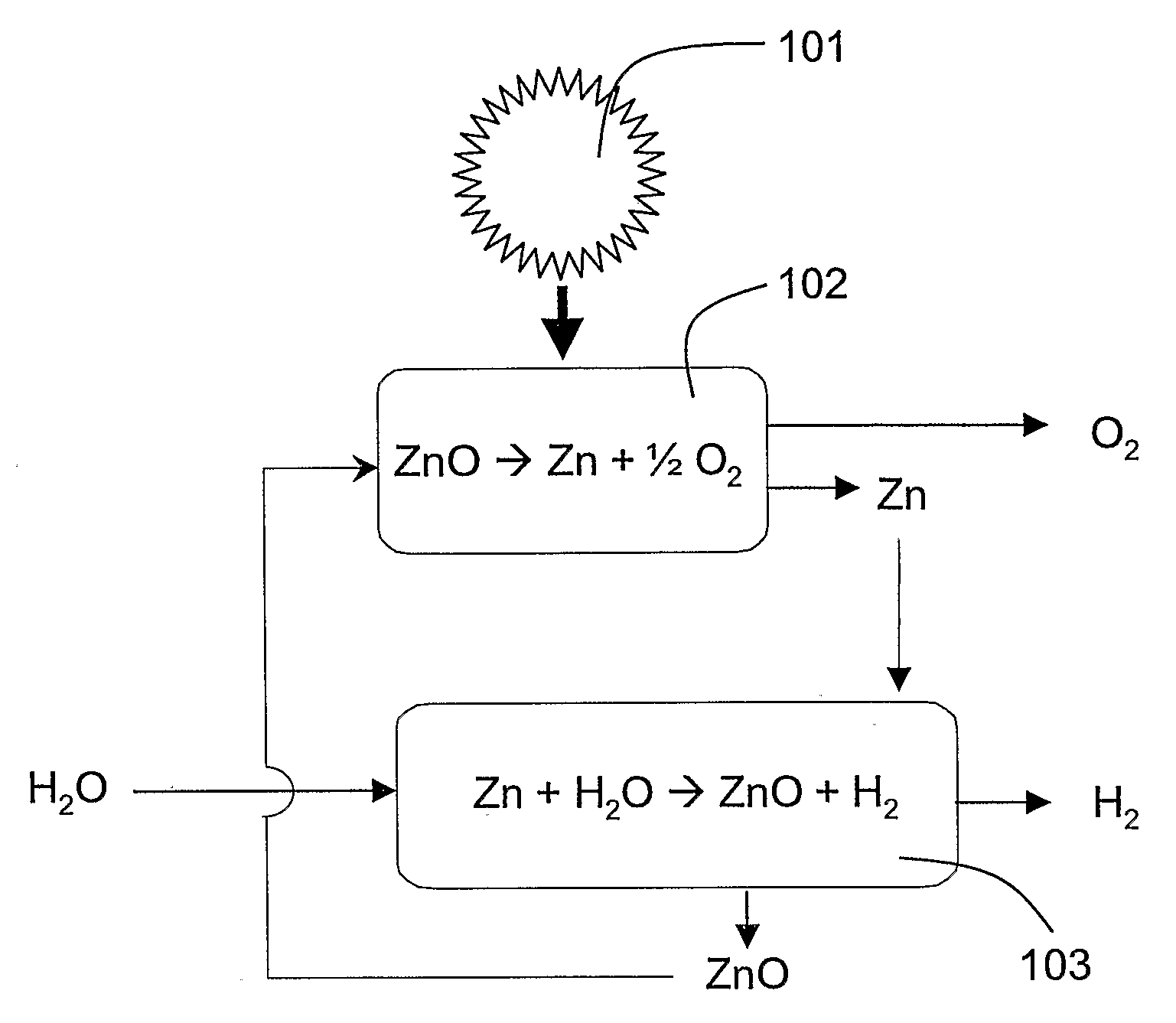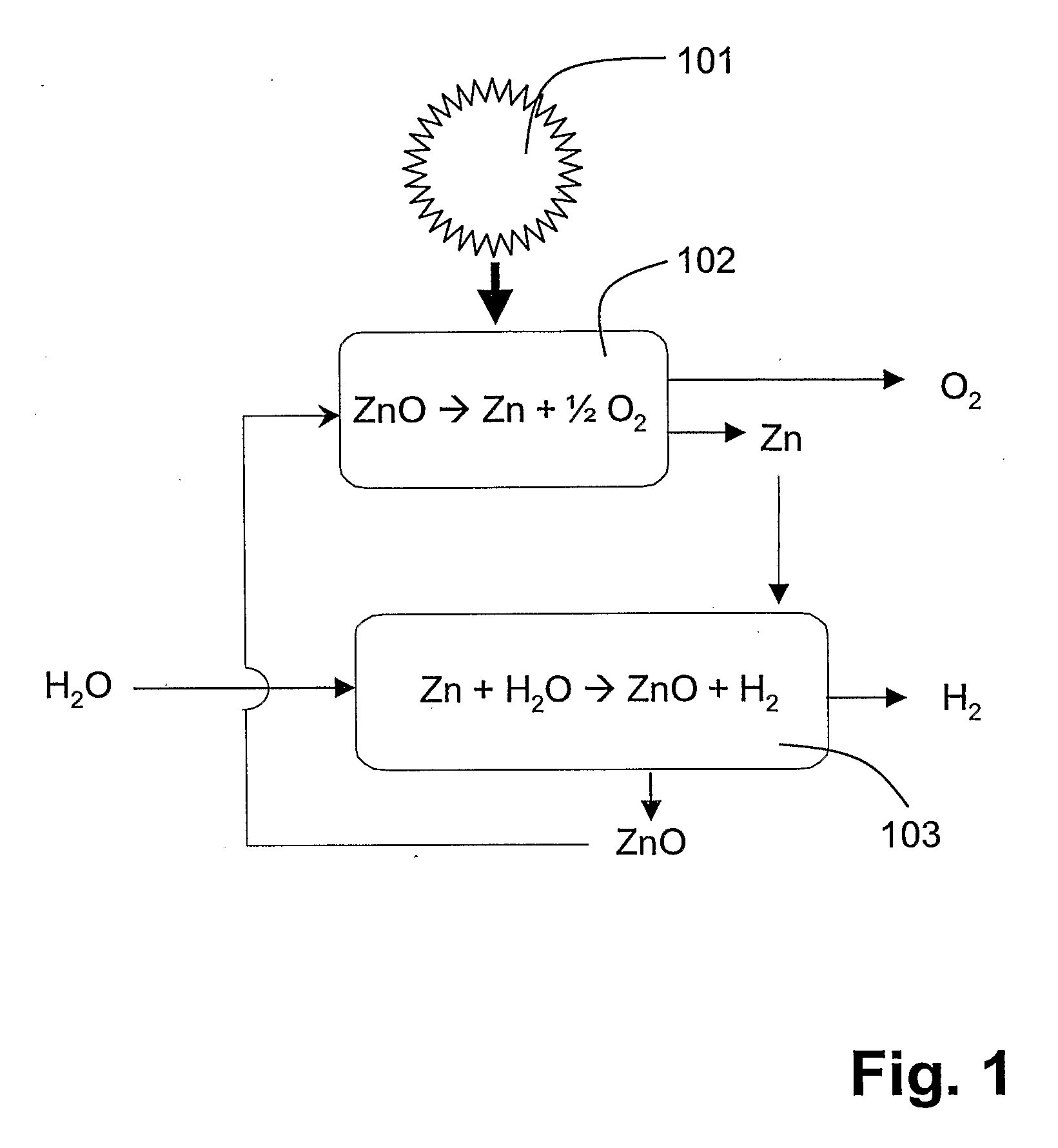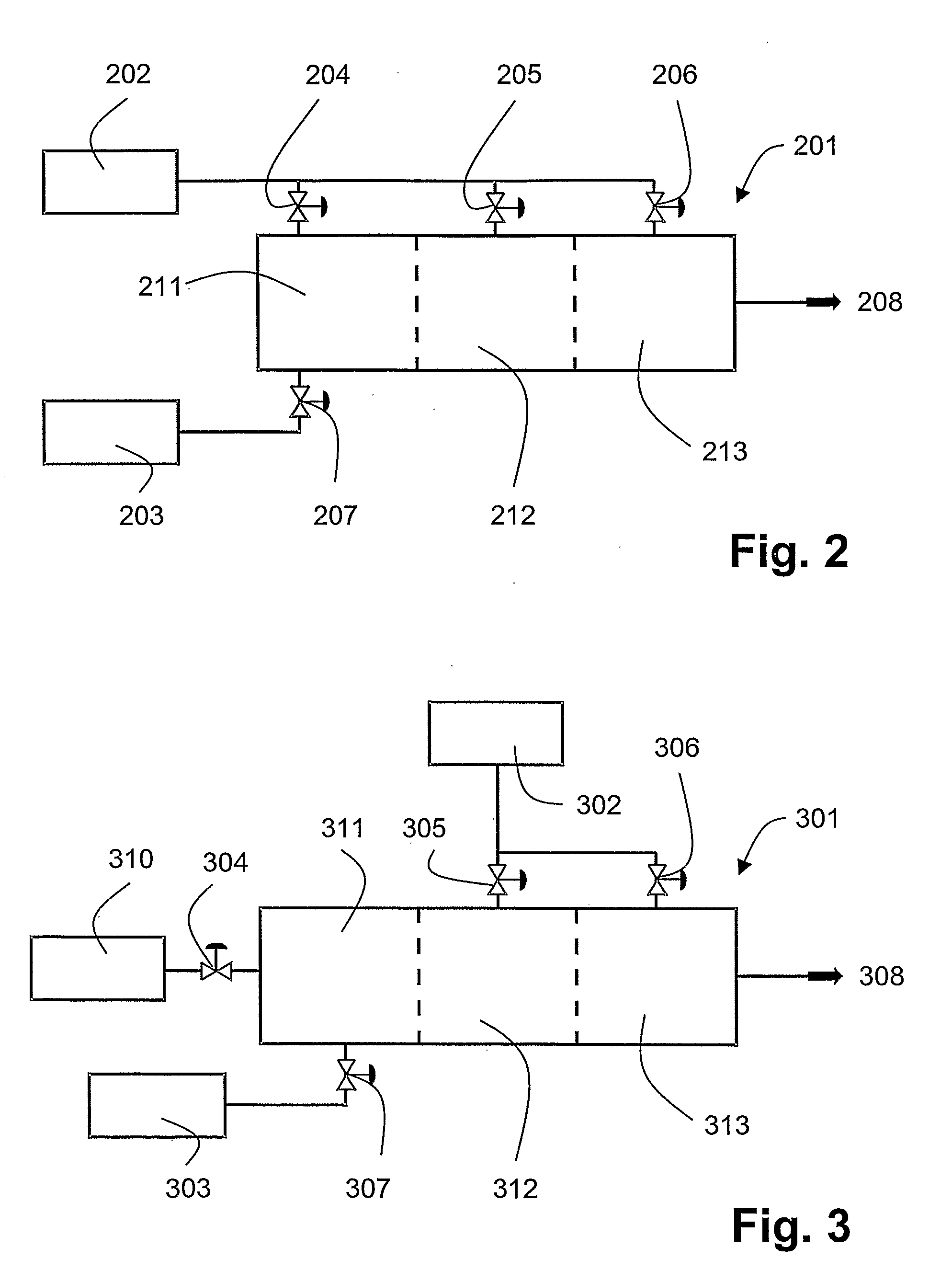Process and apparatus for prodcing concrrently hydrogen or ammonia and metal oxide nanoparticles
a technology of metal oxide nanoparticles and processes, applied in chemical apparatus and processes, oxygen/ozone/oxide/hydroxide, chemical/physical/physicochemical processes, etc., can solve the problems of further complications during start-up and shutdown, limited efficiency of such a method, and difficulty in continuous mode of operation technology, etc., to achieve rapid cooling and simple and highly efficient processes
- Summary
- Abstract
- Description
- Claims
- Application Information
AI Technical Summary
Benefits of technology
Problems solved by technology
Method used
Image
Examples
Embodiment Construction
[0053] Anthropogenic emissions of greenhouse gases and other pollutants can be significantly reduced or even completely eliminated by substituting fossil fuels by cleaner fuels, e.g. hydrogen. A review of the process technology for thermochemically producing hydrogen from water using solar energy is found in (Steinfeld A., Palumbo R., Solar Thermochemical Process Technology. In: Meyers R A, editor. Encyclopedia of Physical Science and Technology, 3rd edition, Volume 15. San Diego, USA: Academic Press, 2002. p. 237-256).
[0054]FIG. 1 shows a schematic representation of an example for a two-step thermochemical cycle for splitting water (H2O) into hydrogen (H2) and oxygen (O2). For an overview over such two-step water-splitting cycles, based on metal oxide redox reactions, see e.g. (Steinfeld A., Kuhn P., Reller A., Palumbo R., Murray J., Tamaura Y., Solar-processed Metals as Clean Energy Carriers and Water-Splitters. Int J. Hydrogen Energy 1998; 23:767-74, and literature cited therein...
PUM
 Login to View More
Login to View More Abstract
Description
Claims
Application Information
 Login to View More
Login to View More - R&D
- Intellectual Property
- Life Sciences
- Materials
- Tech Scout
- Unparalleled Data Quality
- Higher Quality Content
- 60% Fewer Hallucinations
Browse by: Latest US Patents, China's latest patents, Technical Efficacy Thesaurus, Application Domain, Technology Topic, Popular Technical Reports.
© 2025 PatSnap. All rights reserved.Legal|Privacy policy|Modern Slavery Act Transparency Statement|Sitemap|About US| Contact US: help@patsnap.com



